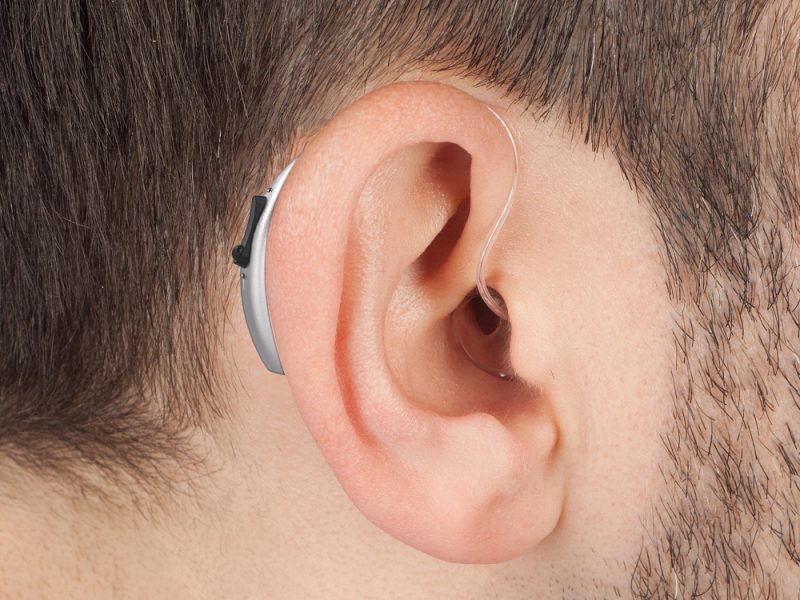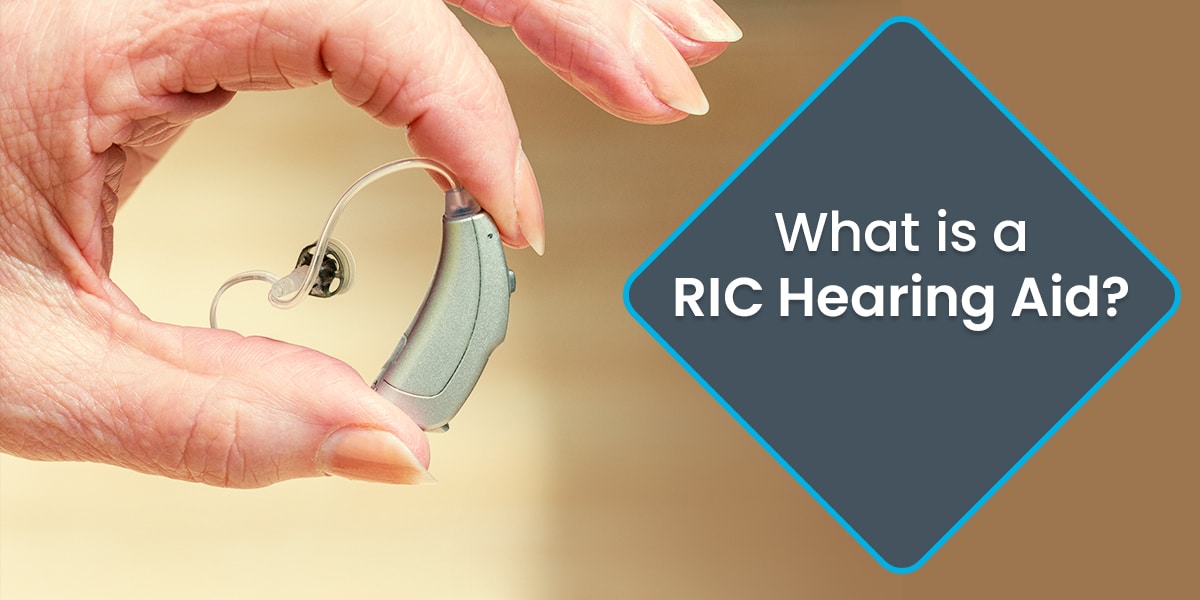
RIC (Receiver-In-Canal) hearing aids are a popular choice for many people with hearing loss due to their discrete design and advanced features.

Functions of RIC Hearing Aids
Sound Processing: RIC hearing aids use advanced digital technology to process and amplify sound, making it clearer and more intelligible.
Receiver Location: The receiver (speaker) is placed directly in the ear canal, connected by a thin wire to the rest of the device behind the ear. This placement helps to reduce feedback and improve sound quality.
Bluetooth Connectivity: Many RIC hearing aids can connect to smartphones and other devices via Bluetooth, allowing for direct audio streaming.
Tinnitus Masking: Some models include features to help manage tinnitus by playing soothing sounds.
Rechargeable Batteries: Modern RIC hearing aids often come with rechargeable batteries, making them more convenient and environmentally friendly.
Benefits of RIC Hearing Aids
Discreet Design: The small, behind-the-ear design with a nearly invisible wire makes RIC hearing aids less noticeable than traditional behind-the-ear (BTE) models.
Improved Sound Quality: Placing the receiver in the ear canal reduces feedback and enhances the clarity of sounds, especially in noisy environments.
Comfortable Fit: RIC hearing aids often use open-fit domes that allow low-frequency sounds to enter the ear naturally, resulting in a more comfortable and natural listening experience.
Versatility: Suitable for a wide range of hearing loss levels, from mild to severe.
Advanced Features: Many RIC hearing aids come with features such as directional microphones, noise reduction, and compatibility with smartphone apps for remote adjustments.
Advantages Over Other Types
Smaller Size: Compared to BTE hearing aids, RIC models are typically smaller and lighter, making them more comfortable to wear.
Less Feedback: The separation of the receiver from the microphone reduces the risk of feedback.
Natural Sound: The open-fit design allows for a more natural sound experience, as it doesn’t block the ear canal completely (Soundly) (Widex) (HearUSA) (Amplifon Hearing Care).
Overall, RIC hearing aids offer a blend of advanced technology, comfort, and discretion, making them a preferred choice for many users.
Which is better, BTE or RIC?
Choosing a BTE (Behind-The-Ear) or RIC (Receiver-In-Canal) hearing aid depends on the individual’s hearing loss, lifestyle, and preferences.
BTE Hearing Aids
Pros: Powerful sound amplification: BTE hearing aids are larger in size, allowing for more powerful amplifiers and larger batteries, and are suitable for mild to profound hearing loss (Amplifon Hearing Care).
Fewer maintenance issues: The electronics are located in a hard shell outside the ear, reducing the risk of moisture and earwax blockage, thereby reducing maintenance frequency and repair costs (Amplifon Hearing Care).
Easier to operate: The larger size makes BTE hearing aids easier to plug in and out, adjust settings, and replace batteries, which is especially convenient for people with poor finger dexterity (Amplifon Hearing Care).
Cons
Large and conspicuous: Traditional BTE hearing aids are larger and more conspicuous, and may feel heavy or uncomfortable (Amplifon Hearing Care).
May Require Ear Molds: Many BTE hearing aids require custom ear molds, which may add some discomfort (Amplifon Hearing Care).
RIC Hearing Aids
Pros: Smaller, More Discreet: RIC hearing aids are small and barely visible, offering a more discreet option (HearUSA) (Amplifon Hearing Care).
More Natural Sound: Because the receiver is placed directly in the ear canal, it can provide a clearer, more natural sound experience (Amplifon Hearing Care).
Reduce Feedback: The separation of the receiver from the microphone helps reduce feedback issues (Amplifon Hearing Care).
Cons
Less Amplification: While RIC hearing aids can provide powerful sound amplification, severe hearing loss may still require the additional amplification provided by BTE hearing aids (Amplifon Hearing Care).
Requires Regular Maintenance: The receiver is placed in the ear canal and is more susceptible to moisture and earwax blockage, requiring regular cleaning and maintenance (Amplifon Hearing Care).
Inconvenient operation: Small size, may not be suitable for people with poor finger dexterity to operate (Amplifon Hearing Care).
Summary
Choosing BTE or RIC hearing aids depends on your specific needs:
If you need more powerful sound amplification and want easy operation, then BTE hearing aids may be more suitable for you.
If you pay more attention to concealment and natural sound, and can perform regular maintenance, then RIC hearing aids may be a better choice.
The final choice should be based on the advice of the hearing professional, combined with the individual’s hearing loss, lifestyle and comfort needs. (HearUSA) (Amplifon Hearing Care).
Our company has professional technicians to develop high-quality RIC HEARING AIDS products. Wholesale and customized hearing aids are welcome. Click https://www.elhearing.com/ric-hearing-aid/ to learn about the best RIC HEARING AIDS
